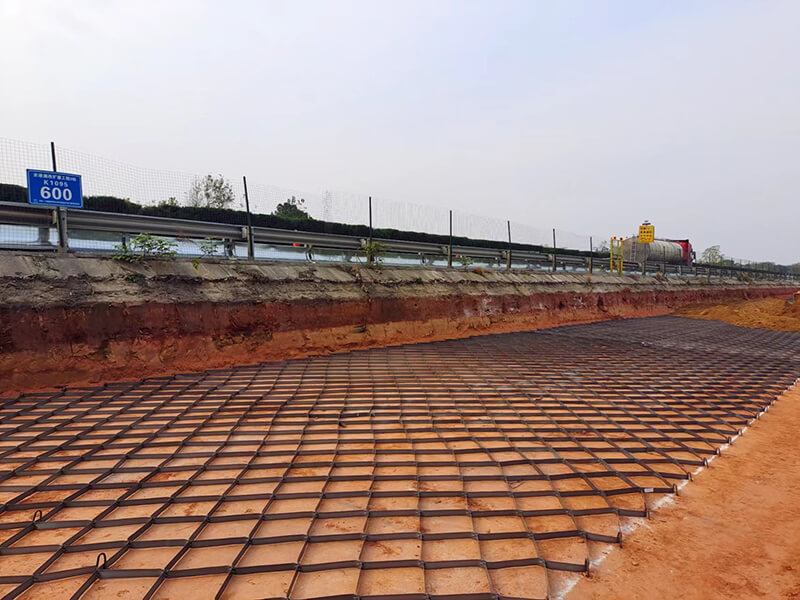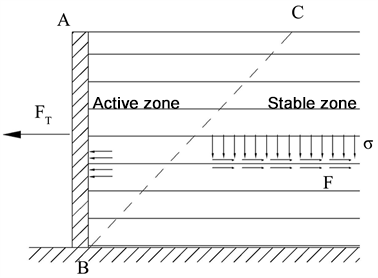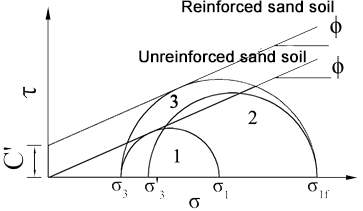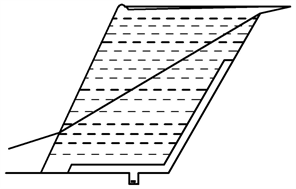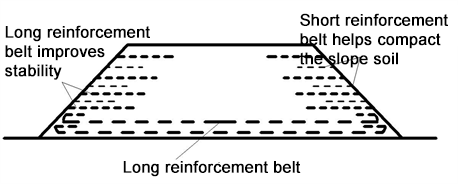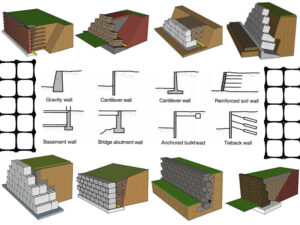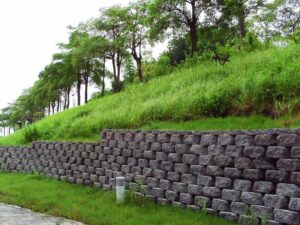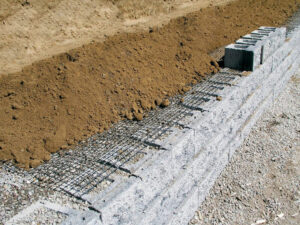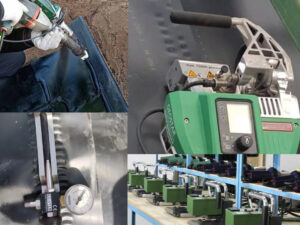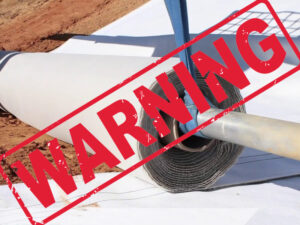Geosynthetics are synthetic products used in geotechnical engineering and have become integral to reinforced soil and stabilization. These materials enhance the mechanical properties of the soil, making them suitable for a wide range of civil engineering applications.
In this article, QIVOC will discuss the types, mechanisms, applications, and advantages of geosynthetics in soil stabilization.
What are geosynthetics
Geosynthetics are various types of products made from synthetic polymers, such as plastics, fibers, rubber, etc., which are usually placed inside the soil body, on the surface of the soil body, or between layers of the soil body to play the role of strengthening or protecting the soil body. At present, the application of geosynthetics has penetrated almost all fields of water conservancy engineering and civil engineering, especially in geotechnical engineering is extremely widely used.
Geosynthetics can be used in all aspects of the actual project and, in general, can be divided into seven aspects of the role, respectively, for the filtration function, drainage, isolation, reinforcement, seepage control, protection and load reduction.
Among them, the role of reinforcement is mainly in the soil mixed or laying appropriate reinforcing materials, mostly geogrid, the formation of reinforced soil, to improve and improve the strength of the soil, stability and deformation of the performance. Typical reinforced soil structures include reinforced retaining walls, reinforced soil slopes, reinforced soil foundations, reinforced soil embankments, reinforced soil bridge abutments, and so on.
The development of geosynthetics is closely linked to the development of synthetic materials such as synthetic resins (plastics), synthetic fibers, synthetic rubbers and so on. Before the development of artificial polymers, although there have been natural resins and plastic products, because of their small production and high cost, so the scope of application is narrow. With the development of artificial polymers, synthetic plastics, synthetic fibers, and synthetic rubber costs are getting lower and lower and simple to produce, with strong applicability, so it will soon be widely used in engineering.
Types of geosynthetics
Geosynthetics include a variety of products, each of which plays a specific role in soil reinforcement and stabilization:
Geotextiles:
Woven Geotextile
Features:
Structure: made of synthetic fibers (such as polypropylene or polyester) through the weaving process, usually showing a regular grid structure.
High strength: due to the tightly woven structure, woven geotextiles have high tensile and tear strength.
Low elongation: woven geotextiles have low elongation and low deformation to better maintain structural stability.
Durability: good resistance to chemicals, UV rays and microorganisms, long service life.
Applications:
Reinforcement: for reinforcing soil structures, e.g. for steep slopes, embankments and road foundations.
Separation: Prevents mixing of soils or materials with different particle sizes, often used to separate foundation layers for roads and railroads.
Filtration: used to filter particles from the soil and allow water to flow through, commonly used in drainage systems and underground works.
Non-woven geotextile
Features:
Structure: made of synthetic fibers through non-woven processes such as thermal bonding, needling or chemical bonding, usually showing a random fiber structure.
Good water permeability: non-woven geotextile has high porosity, good water permeability and effective drainage.
Good flexibility: better flexibility, can better adapt to uneven settlement and terrain changes.
Lower cost: the production process is relatively simple, lower cost, and suitable for large area use.
Applications:
Filtration: for filtration and drainage, e.g. in landfills, tunnels and underground drainage systems.
Protection: for preventing soil erosion, e.g. riverbank protection, coastal protection and reservoir slope protection.
Segregation: Used to segregate different types of soil and materials and prevent them from mixing, e.g. in foundation works for roads and railroads.
Drainage: used in drainage systems as part of the drainage layer to improve drainage efficiency.
Geogrid:
Geogrids are usually made of polymers (e.g. polypropylene, polyester or polyethylene) through special weaving, welding or molding processes in a mesh structure. Because of its high strength, low elongation and good durability in the soil base reinforcement and retaining wall engineering in the application of the official widely.
Geogrid in soil reinforcement and stabilization of the main mesh structure, such as uniaxial grating for regular rectangular or square holes, and biaxial grating for square.
Its main uses in soil foundation reinforcement and reinforced retaining walls are as follows
Soil foundation reinforcement stabilization:
Improve the bearing capacity of the foundation, reduce the settlement of the foundation, and enhance the stability of the foundation. Laying geogrid on soft soil foundation can disperse the load and prevent lateral displacement of foundation soil. Examples include foundation reinforcement for roads, airport runways and railroad beds.
Reinforced retaining walls:
Enhances the stability of the fill, prevents the fill from sliding or deforming, and reduces earth pressure. Laying geogrid in the fill layer, through the friction between the geogrid and the fill soil, a reinforced soil structure is formed, which significantly improves the anti-slip stability of the retaining wall. For example, the retaining walls of highways and railroads and the reinforcement of high slopes.
Geonets:
Geonets are mainly used in drainage systems to quickly remove water from the soil and prevent over-saturation of the soil, thus improving the stability and bearing capacity of the soil body. And also provides mechanical reinforcement to improve the shear strength and overall stability of the soil body. For example, roadbeds, tunnel, embankment and landfill drainage, slope protection, retaining wall reinforcement, and soft soil base reinforcement.
Geomembranes:
Geomembranes are mainly used in areas such as waterproofing and protection.
Waterproofing: Geomembranes are laid at the bottom, inside and outside of landfills, reservoirs and dams, canals and tunnels to provide limited protection against leachate leakage into the surrounding soil and the groundwater system.
Protection: Geomembranes laid at the bottom of industrial waste disposal sites and mine tailings ponds, at the base of oil tanks, chemical storage tanks and other liquid storage facilities can effectively prevent harmful substances from seeping into the groundwater, isolate pollutants and protect the environment.
Geosynthetic Clay Liner (GCL):
Geosynthetic Clay Liner (GCL) is a composite material made from the combination of natural sodium bentonite and geosynthetics, which is widely used in environmental protection projects. It has excellent impermeability properties, can effectively protect groundwater resources, prevent the spread of pollution and ensure the safety of storage facilities. Commonly used in landfills, tailings storage, sewage treatment facilities and other occasions.
Geocell:
A geocell is a three-dimensional honeycomb-shaped geosynthetic material usually made of high-density polyethylene (HDPE) or other polymeric materials. Geocells form a honeycomb structure by expanding, and each cell can be filled with soil, sand, gravel, concrete, and other materials, which are used in soil stabilization, slope protection, foundation reinforcement, retaining wall reinforcement, roadbed reinforcement, and other projects.
Soil stabilization by geosynthetics principle
Geosynthetics in engineering applications are mainly seven, respectively, over the role of filtration, drainage, isolation, reinforcement, seepage control, protection and load shedding, of which the role of reinforcement is more widely used.
Reinforced soil technology is a soil stabilization method to improve the performance of the whole geotechnical system by laying reinforced materials in the soil.
Sandy soil in the action of self-weight or external loading is prone to serious deformation or collapse, but if the soil along the direction of strain buried in a flexible geosynthetic material, due to the friction between the soil and the reinforcing material, will make the reinforced soil as if it had a certain degree of cohesion, thereby improving the mechanical properties of the soil, which is the mechanism of the role of the reinforced soil.
There are many theories about the reinforcing mechanism, such as the friction reinforcing principle (anchor theory), quasi-adhesion principle, homogeneous and other materials, elastic-plastic laminar theory, elastic film theory, passive resistance theory, as well as the consideration of the lateral stress ring and the anchor ring theory of the role of the ring anchors and so on. Currently, we commonly use the friction reinforcement principle and the quasi-viscous cohesion principle for interpretation.
Friction Reinforcement Principle:
The reinforced soil is regarded as an anchoring system, the anchored soil body and geosynthetics are closely bitten, when the sliding soil body slides down or has a tendency to slide down, friction will be generated between the soil body and the reinforced material, limiting the lateral deformation of the soil, which is equivalent to the side of the soil body on the binding force, improving the bearing capacity of the soil body, and to achieve the purpose of reinforcement. As long as the reinforced material has sufficient strength and generates sufficient friction force with the soil, the reinforced soil body can remain stable.
The principle of frictional reinforcement of reinforced soil technology applied in retaining walls is shown in Fig. According to Rankin’s theory, along the active rupture surface BC, the wall is divided into the active zone and the stabilizing zone, and the horizontal thrust generated by the self-weight of the sliding soil prism ABC forms a tensile force on each layer of the reinforcement, which is intended to pull the reinforcement out of the soil, while the frictional resistance of the soil in the stabilizing zone and the reinforcement band prevents the reinforcement from being pulled out. If the frictional resistance of each layer of reinforcement and soil can resist the corresponding soil thrust, the whole wall will not have BC sliding surface, and the internal stability of the reinforced soil will be guaranteed. Simply put, it is based on the friction between the soil and the reinforced material to maintain the stability of the slope and the soil. The tensile properties of the reinforcing material are better utilized, and the self-weight of the soil body is also well utilized to increase friction.
Quasi cohesion principle
Quasi-viscous cohesion principle, also known as composite material theory, that is, the reinforced soil as an anisotropic composite material, that after the addition of geosynthetics to the soil, the reinforced composite soil body of the internal friction angle remains unchanged, and produces a new cohesive force, known as “quasi-viscous cohesion” or “like viscous cohesion “. Therefore, the joint action between the reinforced material and the roadbed fill is provided by the shear force of the fill, the friction force between the soil and the reinforced material, and the tensile force of the reinforced material, which makes the reinforced soil stronger and more stable.
The above theory is experimentally verified by triaxial comparison tests of reinforced and unreinforced soil samples. According to the Coulomb theory and Moore’s damage criterion analysis, as shown in the figure, comparing the limiting equilibrium conditions of sandy soils before and after reinforcement, the reinforced sandy soils have an additional strength increment caused by C’ than the un-reinforced sandy soils, which is “quasi-viscous cohesion” in the strength theory. The increase of quasi cohesion is an increase in the composite strength of the soil and reinforced material composite body, which is conducive to the stability of the composite soil body.
Comprehensive comparison of the two principles, it can be found that the principle of friction reinforcement and quasi-viscous cohesion principle of the two theories are through the reinforcement of soil samples to increase the lateral constraint force, thereby improving the shear strength and compressive strength of the soil.
Geosynthetics in soil stabilization
Soil stabilization technology is widely used in actual engineering, and typical reinforced soil structures include reinforced soil retaining walls, reinforced soil slopes, reinforced soil foundations, soft ground reinforcement, reinforced soil embankments, reinforced soil fill behind bridge abutments, reinforced soil bridge abutments, pile-bearing reinforced embankments on soft foundations, as well as reinforced soil rubble piles, fibrous soil slopes, reinforced base layers, reinforced road beds, and so on. Among them, the most common application and the most perfect research at present are reinforced soil retaining walls, reinforced soil slopes, and reinforced soil foundations.
Reinforced retaining walls
Reinforced soil retaining walls are one of the earliest and most numerous forms of engineering application of reinforced materials. It is widely used in the field of road engineering, airport high slope and embankment engineering depending on its good mechanical and deformation characteristics, convenient and efficient construction and external appearance.
A reinforced soil retaining wall is a kind of supporting structure composed of wall foundation, wall surface (plate), geosynthetic material and filled soil behind the wall. The layout form is shown in Fig.
Its structure is simple, and easy to construct, the panel can be poured on-site, or assembled from steel plate or prefabricated reinforced concrete plate.
Reinforcement with strong tensile properties of the material composition, the panel is connected with the reinforcement, reinforced range by the filler fill compaction, through the filler and reinforced materials generated between the friction to change the original mechanical properties of the fill, so that the fill bearing capacity has been greatly improved.
The stability calculation of reinforced soil retaining walls adopts the limit equilibrium method. The external stability calculation is consistent with the gravity retaining wall, and the soil pressure at the back of the wall is calculated according to the theory of Rankin soil pressure. The internal stability calculation includes the strength of reinforcement material and the calculation of resistance to pull-out stability. The arrangement of reinforcing material should meet the requirement of material tensile strength, and the length should meet the calculation of pull-out resistance, considering the structural requirements.
Reinforced earth slopes
Reinforced soil slopes can be reinforced in two ways, one is the reinforcement of natural slopes, and the other is the stabilization and reinforcement of artificial slopes formed by earth filling. For the former, anchor nails are generally used to anchor the geosynthetics into the slope for reinforcement, requiring the reinforced material to have high strength and modulus. For the latter, the geosynthetics can be filled into the soil in layers as the fill rises, to achieve the effect of layered reinforcement and layered compaction, generally using geotextiles or geogrids. The form of reinforced soil steep slope is shown in the figure above.
The design method of reinforced soil slope is the limit equilibrium method, which determines the size and arrangement of reinforced material and slope structure by calculating internal stability and external stability.
Uniaxial Geogrid Used in Slope Protection and Greening Project Case
Reinforced Earth Foundation
The practice of reinforced earth foundation is to excavate the weak soil layer within a certain range under the foundation, and then lay geosynthetics and sand and gravel as bedding layer layer layer by layer to serve as the holding layer of the foundation. Reinforced foundation has the advantages of improving foundation bearing capacity, reducing foundation settlement and controlling uneven settlement. The reinforcement material of reinforced foundation is generally geotextile, geogrid, geocell or geobelt.
Geosynthetic reinforced soil advantages
Reinforced soil technology is fundamentally a technology to enhance the soil body, compared with the traditional gravity-type support structure, has the following characteristics:
1) simple technology, convenient construction: no need for specialized construction equipment, and reinforced body layer-by-layer backfill compaction to form a flexible structure, loading caused by foundation deformation on the reinforced steep slopes itself has little impact.
2) Local materials, land saving: the filler is general sandy soil, from a wide range of sources, reinforcing materials can also be taken nearby, reducing transportation costs, the structure can be set up upright or on steep slopes to reduce the project area.
3) Short construction period, low cost, obvious benefits: compared with the traditional gravity retaining wall, the cost reduction is generally 10%~50%.
4) Good integrality: through the connecting performance of reinforcement material, it can well keep the force sharing between the soil body, and the adaptability to the deformation is better.
5) Novel structure and beautiful modeling: after construction, the project can be integrated with nature through slope greening.
Summarize.
By discussing the types, mechanisms, applications, and advantages of geosynthetics in soil reinforcement. I believe you better understand that the use of geosynthetics plays a vital role in reinforcing soil and improving soil stability properties, bringing significant benefits to civil engineering.
QIVOC has many years of experience in producing and developing geosynthetics. QIVOC has many years of experience in the production and development of geosynthetics for soil reinforcement and wall applications. If you need geosynthetics to build reinforced soil or retaining walls, please feel free to contact us. We will provide professional technical support and high-quality geosynthetics.
FAQ
How to choose the right geosynthetics? What are the specific selection criteria?
Selection of suitable geosynthetics requires comprehensive consideration of the specific needs of the project, environmental conditions, material performance, ease of construction and economy and other factors.
1. What the project is trying to achieve: impermeability, reinforcement, drainage, protection.
2. Environmental conditions: soil type, climate change, changes in groundwater and rainfall.
3. Material properties: strong mechanical properties, water permeability, durability.
4. Convenience of construction: easy to install, store and transport.
5. Economy: price of geosynthetics, later maintenance cost.
Specific selection criteria should be based on the characteristics of geosynthetics. For example, geotextile used for drainage and filtration should be chosen as non-woven geotextile. According to the requirements of seepage control, choose 0.5mm-3.0mm thickness of geomembrane and so on.
Then refer to ISO, ASTM and other international standards for geosynthetics testing and performance requirements to choose the materials that meet the requirements of the project.
How do geosynthetics perform in extreme weather conditions?
Geosynthetics perform well in extreme climatic conditions, including the following three environments.
High-temperature environment
Under a high-temperature environment, the performance of geosynthetics basically does not change, its thermal conductivity, strength stability and other performance indicators change very little.
Humid environment
The protective properties and water resistance of geosynthetics remain basically unchanged in humid environments.
Cold environment
In cold environments, the cold resistance, plasticity and freeze-thaw resistance of geosynthetics remain unchanged.
What is the service life of these materials? What kind of maintenance or replacement is required?
Different geosynthetics have different service lives. For example, geotextiles have a service life of between 20 and 50 years. Geomembranes have a service life of 30-70 years.
After the completion of construction, geosynthetics need to be regularly inspected, cleaned, repaired, reinforced and other maintenance. For damaged or aging geosynthetics, they should be replaced or repaired in time.
How to ensure good contact and friction between geosynthetics and soil during construction?
During the construction process, ensure good contact and friction between the geosynthetics and the soil mainly through the following aspects.
1. The construction area is cleaned and leveled, and the construction area is properly compacted, especially for loose or soft soil.
2. Geosynthetics are laid in sections to ensure that there are no wrinkles or overhanging problems. The lap width is large enough and fixed with nails, sandbags and other heavy objects to prevent the material from moving.
3. Backfill the soil layer by layer and carry out compaction operation.
4. Arrange professional personnel to monitor the laying and fixing of geosynthetics in real-time during the construction process, to find and correct the problems in time. And carry out sampling tests at any time.
What is the overall cost of using geosynthetics? What are the savings compared to traditional methods?
The overall cost of using geosynthetics is much lower, take geomembranes for example. Since the geomembrane is a rolled material, it has the advantages of easy transportation, simple construction, short construction period, and low cost. Therefore, compared with the traditional reinforced concrete impermeable structure body can save 30% to 50% of the cost budget.
What is the environmental impact of geosynthetics?
The use of geosynthetics has a positive effect on the environment. For example, in environmental projects such as landfills, geosynthetics can play a role in preventing corrosion and seepage, protecting the safety and health of the surrounding environment.
What types of technical support and training does QIVOC provide?
QIVOC provides technical support such as geosynthetics installation instruction, specification testing, solutions to needs, and product recommendations. The training focuses on geosynthetic splitting and overlapping.
For more information contact us info@qivoc.com
Are geosynthetics compatible with other construction materials (e.g., concrete, steel, etc.)?
Geosynthetics are compatible with other construction materials (e.g. concrete, steel, etc.). For example, cement can be used as a filler in geocells.
For more FAQs on QIVOC products, company, shipping, payment, etc., please click here.

